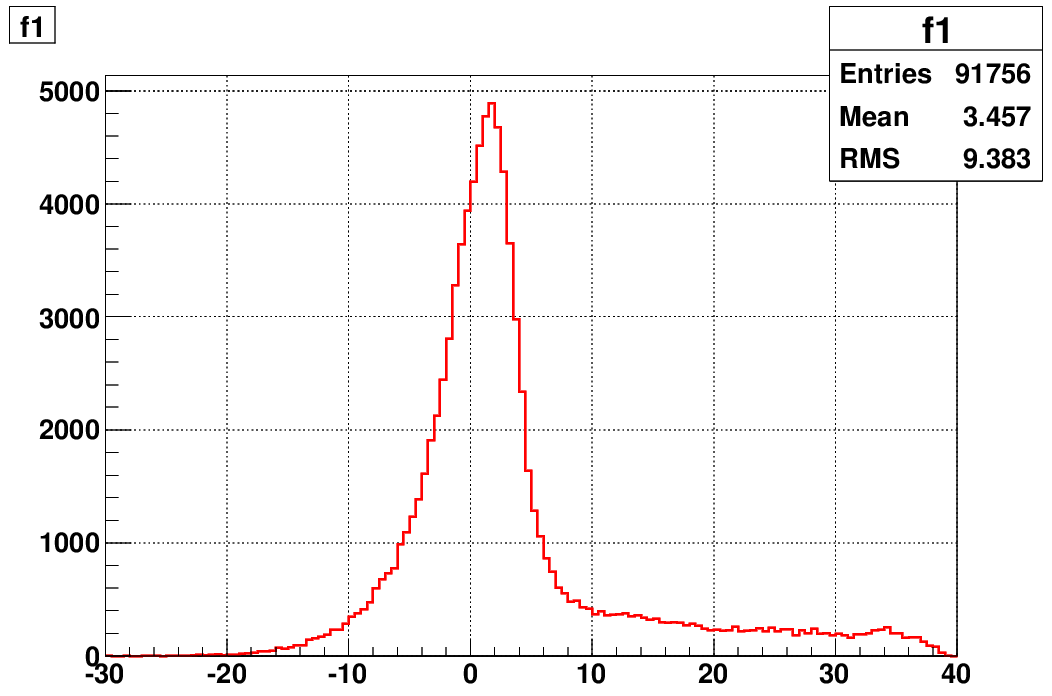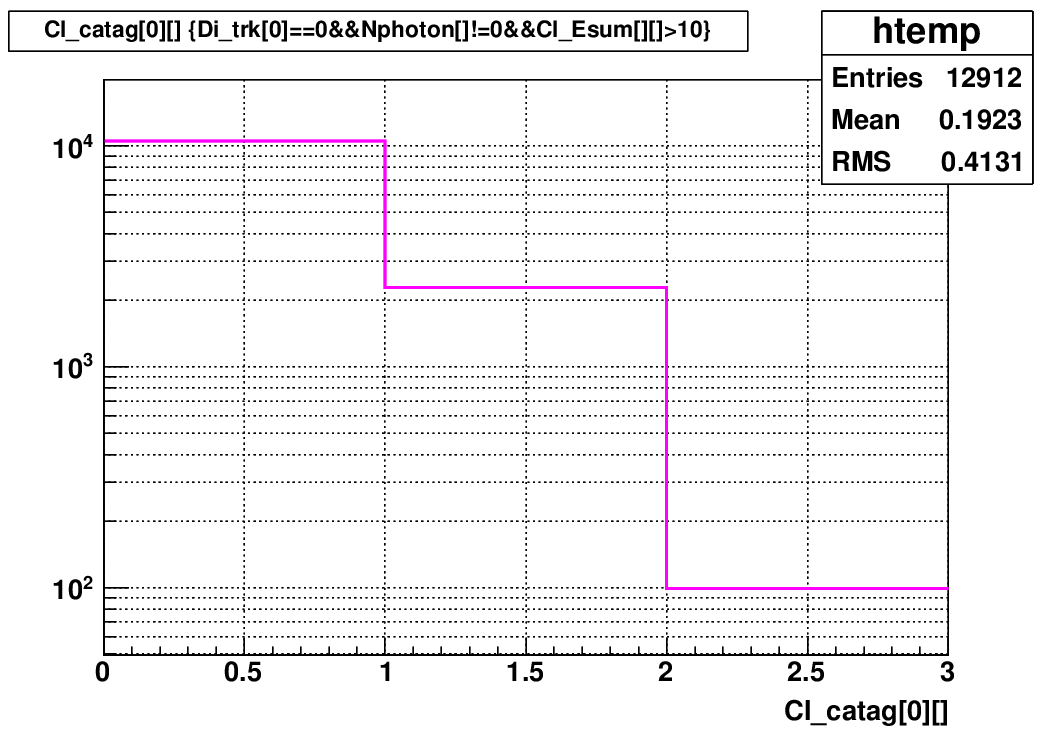- yuxip's home page
- Posts
- 2015
- 2014
- December (2)
- November (1)
- October (2)
- September (6)
- August (2)
- July (1)
- June (3)
- May (4)
- April (1)
- March (2)
- 2013
- December (1)
- November (1)
- October (3)
- September (3)
- August (2)
- July (1)
- June (2)
- May (1)
- April (3)
- March (1)
- February (1)
- January (1)
- 2012
- 2011
- My blog
- Post new blog entry
- All blogs
1- / 2-photon event reconstruction with the new shower function
With the new asymmetric shower function in hand. I examined the true vs reconstructed variables for single photon simulations (40GeV) in GSTAR.
1. True photon position on detector vs reconstructed position, large cells:
.gif)
.gif)
figure 1.a) fit with asymmetric shower function figure 1. b). previous fit with symmetric shower function
small cells:
.gif)
.gif)
figure 2. a) with asymmetric shower function figure 2. b) previous fit with symmetric shower function
2. True photon energy vs reconstructed photon energy, large cells:
.gif)

figure 3. a) with asymmetric shower function. figure 3. b) with previous symmetric shower function.
It can be seen that the new asymmetric shower function which incorporates the incident angle effect was able to reproduce the photon variables more accurately..
Then I went ahead and applied the new shower fit to simulated neutral pion events (40GeV pions). The immediate problem I found was that I got very low efficiency in identifying 2-photon clusters. Actually a lot of 2-photon clusters were identified as clusters that only contain single photon.

figure 4. cluster catagory, from simulation.
Here it's worth laying out the general procedure of discriminating between 1- vs 2- photon clusters:
1. sigmaMax is calculateed for each tower cluster.
2. emprical cuts are appiled on the product of cluster energy and sigmaMax, with 3 possible results: 1-photon, 2-photon, ambiguous
3. if the cluster type is "ambiguous", proceed with single photon fit and 2 photon fit separately. The one with small chi2 / ndf will define the # of photons for current cluster.
Some initial studies showed that the reason I was getting low efficiency (high misidenfication rate) comes from both of 2) and 3).
First let's take a look at the cluster moment-based identification
.gif)

figure 5. a). cluster energy vs cluE*sigmaMax, from simulation figure 5. b) same as a), but from data ( photons from pion candidates)
It appears that the right boundary for 2-photon clusters is a bit too far away, therefore creating a lot of "ambiguous" clusters both in data and simulation.
The next reason is inherited in calculating the chi2 / ndf of the shower fit. The new asymmetric shower function has 5 parameters ( tanx, tany, xc,yc,energy) where as the symmetry version only has 3 (xc,yc,energy). And n.d.f. = # towers in the cluster - 5 for single photon fit and n.d.f. = # towers in the cluster - 10 for 2-photon fit. If # towers is less than the # parameters of the shower function, then n.d.f is set to 1.But at least in the pion simulation, there are fairly large fraction of the clusters contain less than 10 towers. So if they are defined as "ambiguous" in the moment-base analysis, they're highly unlikely to be classifed as 2-photon clusters because the n.d.f for a 2-photon fit is set to 1, which gives a larger chi2 /ndf than a single photon fit.
.gif)
figure 6. # of towers in a cluster, small cells (40GeV single pion)
Links to the above plots:
- yuxip's blog
- Login or register to post comments
